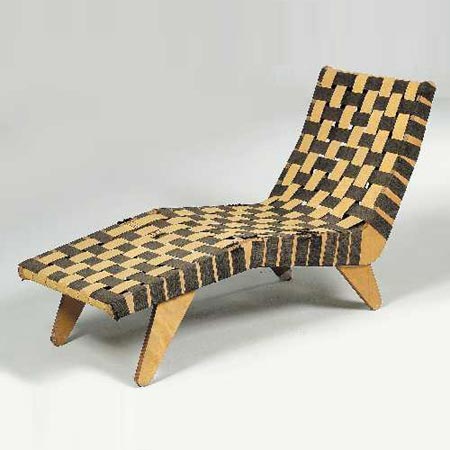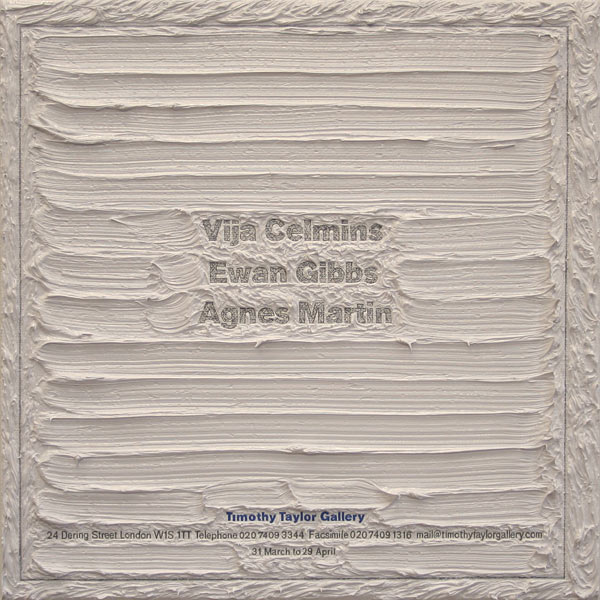Schwarz
View current page
...more recent posts
tony fitzpatrick this train a hobo journal
thx vz
howie pyro radio
The project, called the World Digital Library, aims to “promote international and intercultural understanding,” said James H. Billington, the U.S. librarian of Congress, speaking as the Web site (www.wdl.org) was introduced at Unesco headquarters in Paris.
wfdu-fm 89.1
wbgo-fm 89.3
wkcr-fm 89.9
rago modern auction office highlights:
wharton eshrick corner desk
nakashima hanging wall desk
the big bangs theory
rip sabel starr
clark little surf photography
thx vz
whole earth day
foxfire
mother jones
the geator with the heater
you are what you eat
won on ebay: costal ariel photography
No, the problem with hype is that it transforms the use value of a would-be work of art into its exchange value. For in the middle (there's no end) of the hype cycle, the important thing is no longer what a song, movie, or book does to you. The big question is its relationship to its reputation. So instead of abandoning yourself to the artifact, you try to exploit inefficiencies in the reputation market. You can get in on the IPO of a new artist, and trumpet the virtues of the Arctic Monkeys before anyone else has heard of them: this is hype. Or you issue a "sell" recommendation on the overhyped Arctic Monkeys: this is backlash. But there are often steals to be found among recently unloaded assets: "Why's everybody hatin' on the Arctic Monkeys?" says the backlash-to-the-backlash. The sophisticated trader is buying, selling, and holding different reputations all at once; the trick in each case is to stay ahead of the market. And the rewards from this trade in reputations redound to your own reputation: even though the market (i.e., other people) dictates your every move, you seem to be a real individual thinking for yourself.
No one will admit to being the 100% tool whose taste is 100% social positioning. Probably no one is that person. But anyone sensitive to art is also sensitive enough to feel his true aesthetic judgments under continuous assault from publicists, bloggers, journalists, advertisers, reviewers, and assorted subcultural specimens. Hype-and-backlash overwhelm the artifacts that supposedly occasion them. At this point a basic inversion takes place. Never mind the moon; look at the finger pointing at the moon. Is it pointing too high, or too low? It makes you want to turn away from that overhyped satellite altogether. But there are perversities involved with ignoring hype, too. There's the person who demonstrates his individuality by patently false proclamations: "The Sopranos has nothing on Friends." Or the person who by promoting a revival of some "underrecognized" artist wastes his time and others': "J. F. Powers is the greatest American novelist of the 20th century." Or you shut yourself off from the world and read only Dante. Some people even proclaim discrimination itself hopelessly snobbish, and just watch whatever's on.
Hype-and-backlash might seem simply to speed up and democratize the process of criticism; everybody's a cultural critic now. But this is mistaken. Real criticism of art sometimes attempts the correction of reputations (as when T. S. Eliot encouraged everyone to drop Shelley and pick up Donne), but that's not its main task. Real criticism can take the form of a monograph or a long review, or just a few words mumbled to a friend. In any case, it judges art with reference to the work's internal logic and generic and historical situation. And criticism, which relies on impressions and arguments, is always susceptible to opposite impressions and counterarguments.
construction images won on ebay:
hemp canvas
In 1941 he and Knoll took a three month trip across the country to get a feeling for the different pockets of art and design that were thriving at the time. The trip convinced them that the new generations were going to furnish their homes with quality, modern designs, and when they returned Risom provided Knoll with fifteen pieces for his first Knoll catalogue. This 1942 series [Vostra] featured armchairs, stools and lounges. The chairs, made under wartime materials mandates from cedar wood and surplus webbing, have since become classics and gave Knoll a strong commercial start. The work solidified Risom's style as a combination of simple, well-crafted Scandinavian modernity and streamlined American curves and angles. After the war the cedar was replaced with laminated beech, and the webbed seat and back, inspired by the work of Bruno Matthson, were also replaced with a higher quality material. Knoll’s father’s company sold the chairs as the "Vostra" series in Germany. Risom designed interiors for Knoll, and their New York showroom, but on his return from World War II he started his own company, Jens Risom, Inc.

He stuck a dirty, calloused hand out---"Yo, young blood, lemme hold a dollar". "Yo, professor, lemme hold a dollar". His eyes were milky red, his lips were cracked. "I used to play with Bird". Me- "You played with Bird?" "Yeah, man" he replied. "I played with Bird. I played with Trane too..Bird and Trane....Thunderbird and Night Train! Ahhahahaha". I gave him a dollar
on hating npr
rip citizen kafka
leo castelli , 1976
via vz
"Sooner or later, it’s going to be Brutalism’s turn.”
01_Adaptive Reuse
Four preservation projects -- a barn, a grain elevator, a nurses' dormitory, and a power plant -- show that repurposing old buildings for new uses needn't sacrifice soul.
Wladyslaw Strzeminski 1893 - 1952
In his theory of Unism Strzeminski defined painting as a constant of the artistic discourse and stated that what we can certainly say about a painting is that it is a flat canvas surface covered with paint and limited by a frame. Earlier, dualist art was based on the opposition between form itself and "elements alien to art" that were the source of meaning and expression. Dualism masked the purely formal aspect of art. According to Strzeminski the way to an art "authentic in its very essence" leads through the refusal of dualism to unism, a system that shows painting "such as it really is", in an anti-illusionist unity of form. Space, emotion, narration, and finally illusion should be eliminated from the work. Creation lies in successive reduction aiming towards the unity of a system that in its most extreme form leads to the objective unity of world and art. "Abstract painting does not take its formative means and systems from the outside" , wrote Strzeminski, "by mutually adapting the plastic system and visible nature, but from the inside, out of the laws of its own logic, through observation and the study of the phenomena that link all the elements of a painting, giving it unity and organic quality. Abstract concrete realist painting draws its elements from a concept of plastic art that has the realisation of the painting as its objective". (3)
---
In its quest for the essence of art within a unified, rationalised system of form, Strzeminski's theory of Unism reached the limits of meaning. Defining the system itself as object, he absolutised its generic and consequently its artistic existence. The objective of a work of art, he wrote, is "absolute construction". Merging the conceptual absolutisation of art with the reification of artistic structure, Strzeminski seized the key problem of Constructivism - and involved himself in a modernist contradiction. Starting from a systematic interpretation of art as a sign, he went on to fuse the representer with the represented and undermined the notion of meaning realised by the symbolic structure. He transposed the discussion about painting as a form that participates in social communication into the realm of utopic considerations and proposed the utopia of an understanding situated outside the system - within the object. (4)
The painter who realised a Unistic painting ceased to be a cosmic medium mediating experiences. Instead he became the constructor of a reified world. Experience, which had hitherto been the groundwork of the creative process, was replaced by "mastery and systematic work" giving rise to the product - the result of constructive operations. This was the path chosen by Rodchenko and a group of Russian Productivists. Having realised the "last painting" they abandoned painting as such - and consequently reflection on form - and sought to find their place in industry as "engineers of production", rapidly becoming ideologists of political power. (5)
. Strzeminski, who did not renounce vision as means of communication, did not go as far. According to him, by losing its symbolic import the painting-object became something like a commodity - but without gaining a clear-cut utilitarian value. Insignificant in the world of signs, in the world of things the painting was an absurd object - an extreme situation, in which this object's purely theoretical status became apparent. It could undermine the entire concept of the painting brought forth by historical and artistic processes. By its extreme nature the Unist painting, as a thing-painting, "simply was". The fact of making apparent this state of being in painted paintings constituted the theoretical practice of the contemporary artist. In his practice as a painter and his strictly related practice of seeing Strzeminski tried to counter the idea of the end of art (presented repeateadly and in various version by Russian analysts of the revolutionary period and to overcome the avant-garde opposition between theory and practice.
Strzeminski belived that the specifitity of art, i.e. covering the surface of a canvas (painting) of situating a mass in space (sculpture) - its pictorial or scuptural character - is grounded in experimental practice. This consists of a permanent actualisation of the rules of vision extreme to all that is visible: rules shaped by the "consciousness of visual content" that developed alongside evolution and history. The history of vision and the corresponding pictorial practice were to reconcile the historic, objectified work with the conceptual absolutisation of art. Or, expressed in the categories used here: to reconcile the physiology of the eye and the abstract character of the mind.
bikers apartment
bikers apt house
american routes
brazillian hour
gd hour
the midnight special
mountain stage
pacific radio archives
roots music report
sunday baroque
woodsongs
BF: What do you think of the Stones?
BD: What do I think of them? They're pretty much finished, aren't they?
BF: They had a gigantic tour last year. You call that finished?
BD: Oh yeah, you mean Steel Wheels. I'm not saying they don't keep going, but they need Bill. Without him they're a funk band. They'll be the real Rolling Stones when they get Bill back.
BF: Bob, you're stuck in the 80's.
BD: I know. I'm trying to break free.
BF: Do you really think the Stones are finished?
BD: Of course not, They're far from finished. The Rolling Stones are truly the greatest rock and roll band in the world and always will be. The last too. Everything that came after them, metal, rap, punk, new wave, pop-rock, you name it .... you can trace it all back to the Rolling Stones. They were the first and the last and no one's ever done it better.
BF: This Dream of You has this wonderful South of the Border feel, but at the same time, I detect echoes of Sam Cooke, the Coasters, the Brill Building, and Phil Spector. Were those records from the 50's and 60's important to you? Did you try to capture some of that flavor in This Dream of You?
BD: Those fifties and sixties records were definitely important. That might have been the last great age of real music. Since then or maybe the seventies it's all been people playing computers. Sam Cooke, the Coasters, Phil Spector, all that music was great but it didn't exactly break into my consciousness.
Back then I was listening to Son House, Leadbelly, the Carter family, Memphis Minnie and death romance ballads. As far as songwriting, I wanted to write songs like Woody Guthrie and Robert Johnson. Timeless and eternal. Only a few of those radio ballads still hold up and most of them have Doc Pomus' hand in them. Spanish Harlem, Save the Last Dance for Me, Little Sister ... a few others. Those were fantastic songs. Doc was a soulful cat. If you said there was a little bit of him in This Dream of You I would take it as a compliment.
10 designer-ly twitses
via afc
sigfried giedion space, time and architecture
mcluhan in space
frederic jameson future city
Peter Zumthor, a 65-year-old Swiss architect known for buildings in spectacular alpine settings that mix spare, powerfully elemental forms with a rich range of materials and sly accommodations of history, will on Monday be named the winner of the 2009 Pritzker Prize, the field's top honor.
new riverfront park for jersey city
your favorite artist. popularity contest or marketing research?
artopia
For your amusement, please note that the cover price of ARTnews then was all of $1.25. (This was, believe it or not, the Artforum of its time.) The full-color cover is a detail from Benjamin West's Death of Gen. Wolfe, 1770. The first three pages have full-page ads for Liquitex, Christie's ("Fine Pictures by Old Masters") and Aquatec; the back cover was an ad for Grumbacher paints. Obviously, advertisers knew or were led to believe that ARTnews was read by a large number of working artists.
Even in 1967 there were discreetly placed but timely ads from galleries whose artists were anointed by articles in the same issue. (But not by the some would say too proper Betty Parsons.) Which came first, the ads or the articles? Well, the exposure afforded by a magazine article should at least be thanked. And an ad is always the best way.
kodakgirl records nyc graffiti / nyt slideshow
In his response, Prince, a renowned appropriation artist who frequently uses others’ imagery in his work, argued that the photographs in Yes Rasta are not “‘strikingly original’ or ‘distinctive’ in nature”, and that his “transformative” uses of the photographs were “done in good faith and reflect established artistic practices”. Prince’s answer furthermore stated that his appropriation, which he claims is sanctioned under fair use, “poses no harm to the value of such photographs and any market value relating to the photographs has… been enhanced rather than decreased”. Lawyers for Prince and Rizzoli declined to comment, and Gagosian’s representation did not return phone calls. Prince was sued in the 1980s for copyright infringement related to another photographer’s work; the lawsuit, lodged by Garry Gross, was reportedly settled out of court.sounds like theyre building the settlement and legal fees into the sales prices of the prince paintings. thats not consistent with appropriational economy. thats just fat cats playing games.
In a telephone conversation, Cariou, who is based in Paris, bridled at the claim that Prince only used a small portion of his Yes Rasta photographs. “In my lawyer’s opinion and others’ opinion, this case goes way beyond fair use,” he said. “They used 30 pictures of mine. If you’ve seen the ‘Canal Zone’ book, it starts with Rasta, it ends with Rasta—it is the centrality of it, there is no question.” According to Cariou, the suit has now advanced to the discovery phase, during which his lawyer will try to ascertain how much money the defendants earned from the paintings, among other matters. Gagosian’s filing states that eight paintings from the series were sold, and Cariou says they were priced between $1.5m and $3m each. To Cariou, the defendants’ response has been “extremely arrogant”, particularly the claim that his work is not distinctive or original.
"the thing" bank
Indianapolis shotgun house five thousand dollars
thx justin
BOOKS DISCUSSED IN THIS ARTICLE
Le Corbusier: A Life
by Nicholas Fox Weber
Knopf, 821 pp., $45.00
The Rhetoric of Modernism: Le Corbusier as Lecturer
by Tim Benton
Birkhäuser, 247 pp., $99.00 (to be published in May)
The Villas of Le Corbusier and Pierre Jeanneret, 1920–1930
by Tim Benton
Birkhäuser, 272 pp., $69.95
Le Corbusier and the Maisons Jaoul
by Caroline Maniaque Benton
Princeton Architectural Press, 175 pp., $40.00
Le Corbusier and Britain: An Anthology
edited by Irena Murray and Julian Osley
RIBA Trust/Routledge, 344 pp., $62.95
Le Corbusier Le Grand
edited by Phaidon editors, with an introduction by Jean-Louis Cohen and
chapter introductions by Tim Benton
Phaidon, 768 pp., $200.00
Le Corbusier: The Art of Architecture
an exhibition at the Barbican Art Gallery, London, February 19–May 24,
2009
Catalog of the exhibition edited by Alexander von Vegesack, Stanislaus von
Moos, Arthur Rüegg, and Mateo Kries.
Vitra Design Museum/NAI/RIBA Trust, 398 pp., $168.00
Le Corbusier and the Occult
by J.K. Birksted
MIT Press, 405 pp., $44.95
allison arieff has a fluff column in the NYT (by design opinion blog) allowing the extended design community (including designer, manufacturer, retailer, advertising and news media) to wiggle out of a history of championing design irresponsibility. again the column is B.S. but the COMMENTERS (the consumers) GET IT (heres just one):
Our consumer-driven society is precisely why “toothbrushes can’t be designed to last longer”–if they do, then the manufacturers don’t make money on us buying new ones every few months.read all 68 of 'em. most express their disgust. i smell consumer revolution in the air. i wonder if the NYT is rethinking this comments feature thing yet...
That downturn in endurability is something that’s happened, visibly, within the past two generations. I’m thirty-five, and my mother had small appliances–a sewing machine, an electric mixer, things of that nature–which lasted for twenty or more years. The sewing machine, in fact, lasted so long that when it finally broke, they hadn’t been making replacement parts for years. Even early lightbulbs would burn virtually indefinitely, rather than going dark after a few hundred hours. Very few modern appliances have that kind of shelf life, and from a manufacturing point of view, that’s a design feature, not a flaw.
The idea of “heirloom design” is obviously a winning one, but my fear is that a toothbrush designed to last won’t find its way onto the shelves, and if it does, it’ll be a specialty item that costs three times as much as the competition. Even in good economic times, that’s daunting.
I don’t know if America’s come far enough for that paradigm shift, the one where we fall away from being conspicuous consumers. I certainly hope so; the result would be better for us and for the world. But we’ve proven to have embarrassingly short memories in the aftermath of previous economic woes, and I’m afraid that we’ll return to laissez les bon temps roulez at the slightest opportunity.
"Hiccup, burp, cha cha cha" Just forgot the rest of the joke.ok this joke research is going nowhere
nice to see "Adjustable Wall Bra" by Vito Acconci (, plaster, steel, canvas, electrical lightbulbs, and audio equipment) has found a home in Bade Stageberg Cox's Art Cave. sure wish archinect had bothered to credit all of the artists in the architectural showcase posting. about the Stones.
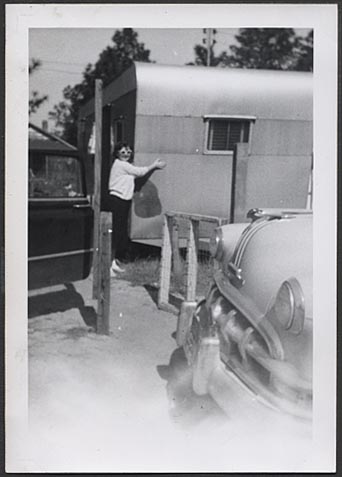
Test Cell
Will Chicago tear down this Mies van der Rohe building?
down with dubai
30 ways to die from electrocution / #1 pee on a live wire
via wfmu blog
populuxe books / furniture division (note generous previews)
how to make a calder mobile
The Sounds of American Tropical Rain Forest (SFW CD 6120), produced in 1952 by the American Museum of Natural History, is rumored to have been recorded in a New York City shower.smithsonian folkways 24 x 1 hour podcasts (that should take you all day to listen to) / thx adman
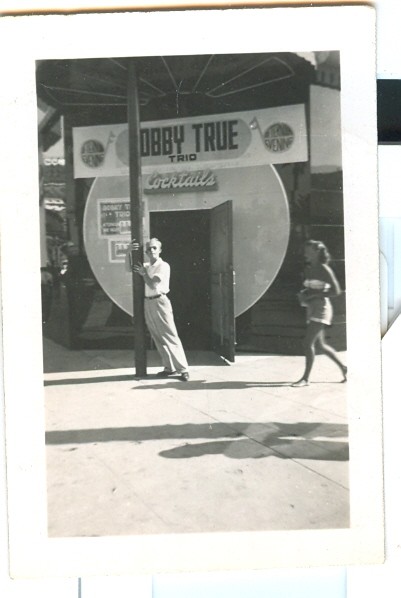
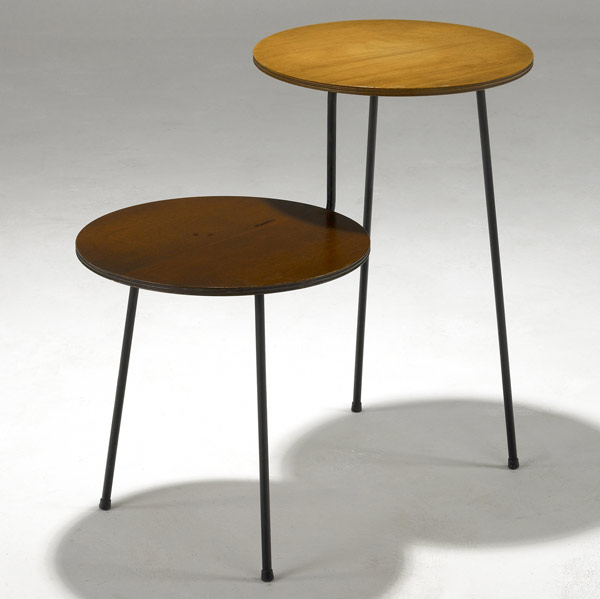
Lot: 775
MARIO DAL FABBRO Prototype side table with two-tiered ash laminate tops, one stained, on black enameled metal base. 25" x...
$3,000 - $5,000
rago modern auction apr 25 26
iTunes offers free John Cage: 4'33
open source multimachine
thx jim
haags hotel shartlesville pa monthly from $450
A colleague of artists like Jim Dine, Claes Oldenburg and Nam June Paik, Mr. Brown was a central figure in the anarchic New York art scene of the early 1960s, a participant in — and instigator of — events-as-art known as “happenings.” He saw the potential for aesthetic pronouncement in virtually everything. His métier was willful preposterousness, and his work contained both anger and insouciance.hat tip t moody
His raw materials included buildings, pornographic photos and even meat carcasses. He often performed in the persona of a religious leader, but dressed in a clown suit with a red nose and antennas hung with ripe bananas. In the end his message to the world was that both spirited individualism and unimpeded creativity must triumph.

the wrecking crew
gene swenson and the new american sign painters
Henry Geldzahler, a precocious curator at the Metropolitan Museum and art-world gadfly, particularly piqued his jealous ire. Swenson notoriously sent the museum a funeral wreath bearing the name “Henry” and challenged the curator to a $10,000 riddle, but Geldzahler didn’t take the bait. On another occasion, Rosenquist remembers Swenson loitering outside a party thrown for Rosenquist at Rauschenberg’s studio by collectors Ethel and Robert Scull. Once invited inside, Swenson eyed a huge temporary chandelier and asked how many people it would crush if its ropes were cut; the alarmed hosts had him tailed all night in case he tried to find out. By this point, according to his friend Bill Wilson, “Gene had assumed the pathos of the creative person whose madness has ceased to be funny.”
Petty jealousies and professional disappointments aside, Swenson’s beef with the art world became increasingly motivated by an all-consuming moral and political zeal. As America plunged deeper into racial strife and Vietnam he was dismayed that his fellow writers and artists were unwilling to join him on the barricades. Although he had abandoned the insular debates of the art magazines, in the spring of 1968 he published four pieces in the liberal tabloid New York Free Press, newspaper home to Abbie Hoffman and Eldridge Cleaver. In articles such as “The Corporate Structure of the American Art World” and “Why Have None of My Fellow Artists Spoken a Word in Behalf of the Revolution?,” Swenson decried the funding of museums by “the economic dictatorship” and scoffed at handouts from “‘enlightened’ despots” while suggesting a guaranteed annual wage for artists. Taking aim at his colleagues’ political complacency, he wrote, “We of the art world have been wearing our responsibilities too lightly these days. This frivolity will live in the pages of history as The Shame of the Artists.” Privately Swenson gave Rosenquist the silent treatment for allowing his work to “serve the government” at the São Paulo Bienal, and publicly he accused his old friend of taking the “ostrich position.” In a particularly vicious swipe, he branded fellow critic Barbara Rose “our Marie Antoinette, with all that implies.”
Swenson supplemented his political writing with acts of public protest, including a fiery speech outside the Leo Castelli gallery, and he was arrested twice, which gave him great pride. In February 1968 he began his daily picketing of MoMA, carrying his blue question mark. Apparently out of fear that he might damage the art, museum officials banned his entrance. Swenson staged his last and most poignant act of defiance against the museum on the occasion of William Rubin’s exhibition “Dada, Surrealism, and Their Heritage,” MoMA’s first comprehensive look at the movements since 1936. Rather than applaud his beloved Surrealism’s ascent into the ivory tower, Swenson railed against the museum alongside other critics, such as Nicolas Calas, who lamented the art’s symbolic castration at the hands of a formalist curator more concerned with his subject’s stylistic taxonomy than its seditious sex appeal. Swenson took out unsigned ads in the Village Voice “dedicated to the lost but not forgotten spirit of Dada and Surrealism” and invited readers to “join Les Enfants du Parody” outside the “Mausoleum Of Modern Art” on the night of the exhibition’s private preview. Nearly three hundred sloganeering demonstrators heeded the call to arms and gathered at MoMA’s entrance, which was guarded by crash-helmeted members of New York’s Tactical Patrol Force. On hand for the opening, Salvador Dalí wryly quipped to the New York Times, “I’m very proud of the hippies. . . . But, unfortunately, many of the young people today have no information. Dada was a protest against the bourgeoisie, yes—but by the aristocracy, not by the man in the street.” So much for radical idealism.
Like a classic Mexican standoff, the market for blue-chip art has come to a virtual standstill. The storyline goes something like this: The only speculators/collectors willing to sell want yesterday’s prices. The only speculators/collectors open to buying want today’s prices. That being the case, precious few deals are getting done.the reality is warhols freight wig paintings were never blue-chip to begin with, that is if blue-chip still confers important work.
With the price declines at last November’s auctions, collectors and dealers alike were licking their chops at the thought of scooping up art at 50 cents on the dollar. Fear was in the air. Prior to the sale, auction house experts were actually telling collectors (off the record) what it would take to secure certain guaranteed paintings. After the sale, Sotheby’s and Christie’s public relations departments did their best to put a positive spin on the results. But veteran collectors weren’t buying it. They were too busy plotting how to get that $5 million Mark Rothko painting on paper for only $2.5 million -- or less.
On a personal level, my first thought was that my Andy Warhol green Fright Wig that I sold for $375,000 in May, 2005 -- which would have been valued at several million dollars during the market’s acme (London sales of June 2007) -- was back to being worth around $375,000 again. These thoughts were confirmed by the recent results brought by a triumvirate of small "Fright Wig" paintings that averaged a little over $400,000 apiece, at Sotheby’s February 2009 sales in London.
taking the train
bell labs saarinen holmdel nj
Now, Bell Labs may pull the ultimate vanishing act: It may disappear forever. The former home of Nobel Prize-winning scientists whose research made possible the cell phone, the computer—and a score of other indispensable products in the average household—stands vacant, a holdover from an era when large private facilities stood at the forefront of scientific research in this country. (Bell, one of the last bastions of basic research in the corporate world, closed its physics lab last year.)
Alcatel/Lucent, the most recent owner, left the site two years ago and last fall contracted to sell it to Somerset Development. Based in nearby Lakewood, N.J., Somerset has proposed an ambitious plan to transform the site into a kind of New Urbanist town square—a plan that calls for new development but has heartened many Bell Labs devotees because it saves the building.
This month, however, Holmdel's township committee commissioned and released a plan of its own, recommending that Bell Labs be razed to make way for golf links, equestrian grounds, and million-dollar houses, among other projects. The building, the report suggests, is nothing more than a rapidly expiring white elephant, past the point of resuscitation.
Bell Labs has already survived one call for demolition, proposed a few years ago by a different firm interested in developing the site. Now a political battle is imminent in Holmdel, a town of 15,000-plus people with a median household income over $110,000, about how—if at all—the building can be adapted for 21st-century use. The fate of one of Saarinen's final projects, which brought many of a generation's finest minds to Holmdel—physicists and engineers working elbow-to-elbow on cutting-edge research—stands in the balance.
Atlanta officials are pushing for the demolition of Marcel Breuer's Fulton County-Central Library, conceptualized in 1969 and completed in 1980, a year after the architect's death.
Last November, Fulton County voted in favor of a referendum that would direct $275 million dollars to its libraries. If private donations come through, $84.4 million of that would go to a new central library in Atlanta's downtown.
pattern poetry d higgins, h francke
art since 1900: modernism, antimodernism, postmodernism
vol one1900-1944 and vol two 1945 to the persent
To grasp the distinctive character of Art Since 1900, it is worth briefly retracing the evolution of Krauss's ideas. Her first book, published in 1971, was on the sculpture of David Smith, an artist championed by her mentor, Clement Greenberg. But Krauss located the originality of Smith's work in psychological and philosophical issues that had nothing to do with Greenbergian formalism, Krauss argued that, whereas traditional sculpture presented figures and objects as forms radiating out from a hidden "core," analogous to the hidden self of consciousness, Smith shifted to a contingent, additive mode of composition, challenging not just conventional esthetics but also the Cartesian idea of the mind-body relationship. (1) Krauss expanded on this premise in her 1977 book, Passages in Modern Sculpture, a selective history tracing the medium's evolution from Rodin to Minimalism. Here she argued that the achievement of Minimalism was "to relocate the origins of a sculpture's meaning to the outside, no longer modeling its structure on the privacy of psychological space but on the public, conventional nature of what might be called cultural space." (2) As Krauss explained, Minimalist artists were influenced in this direction by a variety of sources, from Ludwig Wittgenstein's attack on "private language" to the "objective," anti-psychological novels of Alain Robbe-Grlllet. (3)
Meanwhile, Krauss (together with Annette Michelson and Jeremy Gilbert-Rolfe) had started October. In its pages, Krauss and her colleagues reformulated the critical program of Minimalism in the language of French structuralism. There was an immediate affinity between the two, since in France structuralism represented a revolt against the existentialist idea of the self. Yve-Alain Bois was soon recruited to the October group, bringing with him a novel synthesis of structuralism and Greenbergian formalism. (4) With the advent of post-structuralism in the later 1970s, the attack on the idea of the self was rephrased in terms borrowed from Michel Foucault, Jacques Derrida and Jacques Lacan. Especially influential was Lacan's discussion of the "mirror-stage," which posits an incurable contradiction between the real incoherence of the self and the factitious unity it achieves when it perceives itself in the eyes of others. In the 1980s, Krauss discovered the writings of the dissident Surrealist Georges Bataille, and restated the subversion of the self in terms of "formlessness," "horizontality" and "base materialism." (5) Taking Lacan and Melanie Klein as points of departure, new recruits such as Hal Foster and Mignon Nixon used psychoanalytic theories about psychic fragmentation to explicate Surrealism and contemporary art. (6) Meanwhile, the academic leftism implicit in the journal's title, a reference to Sergei Eisenstein's film about the Russian Revolution, was bolstered by the contributions of the German scholar Benjamin H.D. Buchloh, who drew on the works of Walter Benjamin, Theodor Adorno and Peter Btirger to argue that the idea of the independent self was a piece of bourgeois obfuscation, and that the role of true avant-garde art was to expose it. (7)
restore philly pa

